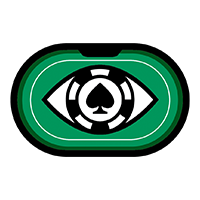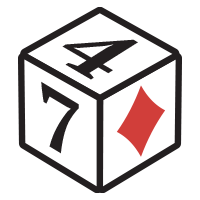What is eternity to you? To be remembered by all. In this video, you will see the difference between knowing the path and walking the path. Where others only see one way out, there are those who can stop time and dodge the reply.
Joao Vieira, Winamax Team Pro with more than $21 million in live profits, faces off against the player many consider the best in poker history: Phil Ivey. For many newer players, Phil is almost a myth — but for over 20 years, he’s been playing the highest stakes, dominating televised games of all formats: two-card, four-card, five-card, draw, you name it.
Today we’re at the World Series of Poker in Las Vegas.

This hand couldn’t be fresher — straight from the 2025 $100K High Roller final table, where two of the game’s best collide. You’re going to learn about range advantage, nut advantage, and how to apply these concepts like a pro in real life.
Adrián Mateos is also at the table, hunting another final table appearance this series. It’s his first cash of the WSOP, as it is for Phil. And you can feel it — they all want heads-up.
This combo is interesting. Joao opens from the hijack, but has Phil Ivey behind him. Against an awkward stack like Ivey’s, maneuverability is limited — you’d like to have 22 big blinds or so to open more comfortably, but with 18 bigs behind you, you need to tighten up. Ivey defends the big blind with K4 — a very standard defend given his stack and position.

This is where ICM comes in: the Independent Chip Model. Mateos, as the short stack (with 1,355,000 in chips), puts extra pressure on both Joao and Ivey. If Joao waits for Mateos to bust, he’ll ladder up in payouts. You always feel this pressure in tournaments — never in cash games or formats like Spin & Gos where the chip model is purely ChipEV.
Even under ICM pressure, Joao must continue opening — but less than in a ChipEV scenario. Ivey, as the big blind and second-biggest stack, gets to defend super wide. He can also put Joao’s tournament life at risk at any point.

The flop comes Q♦ 4♠ 2♣. When the opener has a narrow range and the big blind has defended super wide, this is a textbook 100% c-bet spot for the in-position player — betting every time for a small 25% sizing.
Look at the equity distribution graph. Green is the big blind (Ivey), red is Joao. The wider the gap, the more one player dominates. Here, Ivey has around 25% of his range with 75%+ equity, while Joao has only about 51%. That’s range advantage: when one range dominates the other, you bet more often.
Joao’s 25% c-bet forces Ivey to fold a ton — around 40% of his hands, even to this small bet.

But one thing you never fold to a small c-bet? A pair. Ivey’s middle pair (4x) is an easy continue.
One key concept: when your opponent is betting their entire range, your medium-strength hands — like top pair with a weak kicker — can sometimes become check-raises. But in this case, Ivey just calls.

The turn is perfect for Phil — another 4. Suddenly, his range jumps in equity. On the flop, Ivey was a dog. On the turn, with trips, he dominates. His K4 now has nearly 100% equity versus Joao’s range.
This is nut advantage — when your range has more “want-to-jam” hands than your opponent. In these spots, the player with the nut advantage wants to push the action and force more chips into the middle.
And that’s what Ivey does: a 300k donk bet. It’s perfectly logical. He’s no longer just defending; he’s taking control.

When you have range advantage, you bet often. When you have nut advantage, you bet bigger. That’s the difference. If you know an investment wins 60% of the time, you’ll bet more than if you win just 10%.
For Joao, this is a brutal spot. He opened preflop with a wide range under ICM pressure, c-bet his entire range on the flop, and now faces a polarized donk lead from a player whose range just smashed this turn card. Joao’s still ahead of many hands, but the sizing and the dynamic force him to think carefully.
And one final detail: Joao started this hand with 20BB, and after c-betting the flop he has only 18BB behind. That affects sizing. When the stack-to-pot ratio is this low, small turn bets are fine because they set up a natural shove on the river. But Ivey’s big donk bet makes it clear: he’s ready to play for stacks.
Betting a small size here gets us an SPR close to one, setting up an easy play for stacks on the river. But there’s also another part of Ivey’s range that benefits from betting small: his weaker hands. As I always say — think about your entire range.

Ivey’s not just thinking about his trips here. He also wants to bet hands that look weak at first glance, like 2x. A small bet makes it easier for Joao to call with worse hands like ace-high or king-high while still extracting value and denying equity from overcards like J10 or random floats. Against this small size, Vieira has to continue super wide — basically any pair, any ace, even some king-highs are easy calls.
This is , and when Ivey donks again, Joao’s going to call with a lot of hands. The SPR is now under one for the Portuguese pro — a critical detail.
Then the river comes: .

For Vieira, it’s a disaster card. Straights get there, flushes complete, and he’s now losing to every plausible draw that was barreling. Whatever little equity he had left on the turn is gone.
Ivey checks. It’s an interesting choice.

Normally, you’d want to bet for value here. But against a player like Joao, checking lets him hang himself with a bluff. Ivey knows that if Joao has a queen, a weak pair, or even ace-high, he’s tempted to bet big. But if Ivey jams himself, those hands just fold. Against an aggressive opponent, checking traps more money.
Joao now faces the decision. He can check back and win against Ivey’s bluffs. But in his mind, he never wins at showdown here. So he turns ace-jack into a bluff, ripping it in for 1.2M into 1.4M.
Let’s break this down.
From Ivey’s perspective, the pot is 1.4M. He has to call 1.2M to win 2.6M. That’s about 33%. He only needs to be right one-third of the time to break even. Joao has plenty of missed bluffs here — busted floats, random overcards. Many of those will shove when checked to.
But Joao’s logic? He thinks he never wins at showdown. So instead of giving up, he overbluffs — counting on Ivey to fold his queens, weak 2x, and maybe even some 4x. He needs Ivey to fold about 46% of the time to make this bluff work.
Ivey folds without blinking. It's a very good hand in this situation.

This is such a good lesson in not being results-oriented. Whether your bluff works or your call wins isn’t the point. It’s all percentages.
If a river call needs to win 33% of the time and you’re winning 40%, that’s printing. But for beginners, losing four out of ten feels like failure. That’s the beauty of poker — the best game in the world. Everyone thinks they know how to play, but those who actually do focus on constant improvement, hand by hand, session by session.
And you? What would you have done in this spot?















